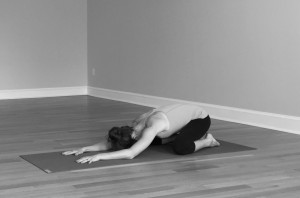‘Tis the season for excess vata…fa la la la la la la la la. ? ? ? 
What exactly does that mean? Well, Can you answer yes to any of these questions:
- Do you find yourself swinging from extreme moments of frenetic energy to puddles of exhaustion?
- Is your skin and hair dry?
- Are your joints creakier and poppier than normal?
- Do you feel a bit irregular, maybe even constipated?
Yes? Too much vata.
Not to oversimplify an ancient science, but this is just a blog so I must. Ayurveda is the sister science to Yoga and a fascinating, logical medical study. Sanskrit for wisdom of life, Ayurveda approaches medicine from a wholistic perspective. It examines the individual in her full form and determines the best methodology of living to keep the mind, body, and spirit in balance.
We each consist of 3 doshas, or energies, that make up our constitution; vata, pitta, and kapha. By keeping these 3 doshas and their corresponding physical, emotional, and mental qualities in balance we, not only prevent disease, but also live to our full potential.
This is a good place to pause and take a dosha quiz. Try one of these:
Ok so now that you know your constitution or prakriti, you may have determined that vata is not your primary dosha. Regardless, even at this time you may experience some of its qualities more often than normal. And if you do not then you can stop reading here.
This cold, dry, frenetic time of year can push our vata in excess. Vata is air, wind, movement. So all the functions within the body that require movement involve vata; digestion, elimination, circulation, nervous system, and thoughts. When there is too much vata, you may feel out of balance and possibly have these symptoms:
- too much gas (air)
- nervous energy
- anxiety
- constipation
- cold extremities
If you are feeling uprooted it is so important to get grounded especially during the holiday season. Where is the best place to begin getting stable and calm – with breath of course. Begin with some simple breath exercises; a basic inhale and exhale for a few minutes. If you are feeling fancy try Nadi Shodhana (alternate nostril breathing).
Incorporate lifestyle changes that balance vata energy. Like is attracted to like, so vata folks are drawn to high intensity workouts, frenetic schedules and overextending themselves. However, at this time of year, slowing everything down will help vatas thrive.

- Wake up, go to bed, and eat at regular times each day
- Include a daily gentle, restorative yoga yoga practice
- Think warmth in your diet – warm soups, hot tea
- Daily massages with almond or sesame oil
When the world around you feels like a cyclone of chaos and overstimulation, pause and consider not jumping into that storm. It may be tempting, but instead think what it would be like if you remained out of it; calming the storm within you. Try this:
Stand in Tadasana. Close your eyes and stand tall. Spread the flesh of feet. Imagine a funnel at the top of each femur. Apana, the vata energy that drives downward movement, is swirling around the pelvis. Can you corral the apana and organize it? Let it pour out of the pelvic basin through each funnel. Feel it travel down each leg and when it reaches your feet allow it to radiate out spreading its roots into the ground. Feel the support of the earth. As the roots grow deeper and wider can you feel more stable and purposeful in the pose? Use that sensation to cultivate a sense of calm and confidence within yourself. Now slowly open your eyes.
A vata in balance is full of vitality, joy and creativity. Doesn’t that sound wonderful?
For more information check out Down Under’s Ayurvedic School.